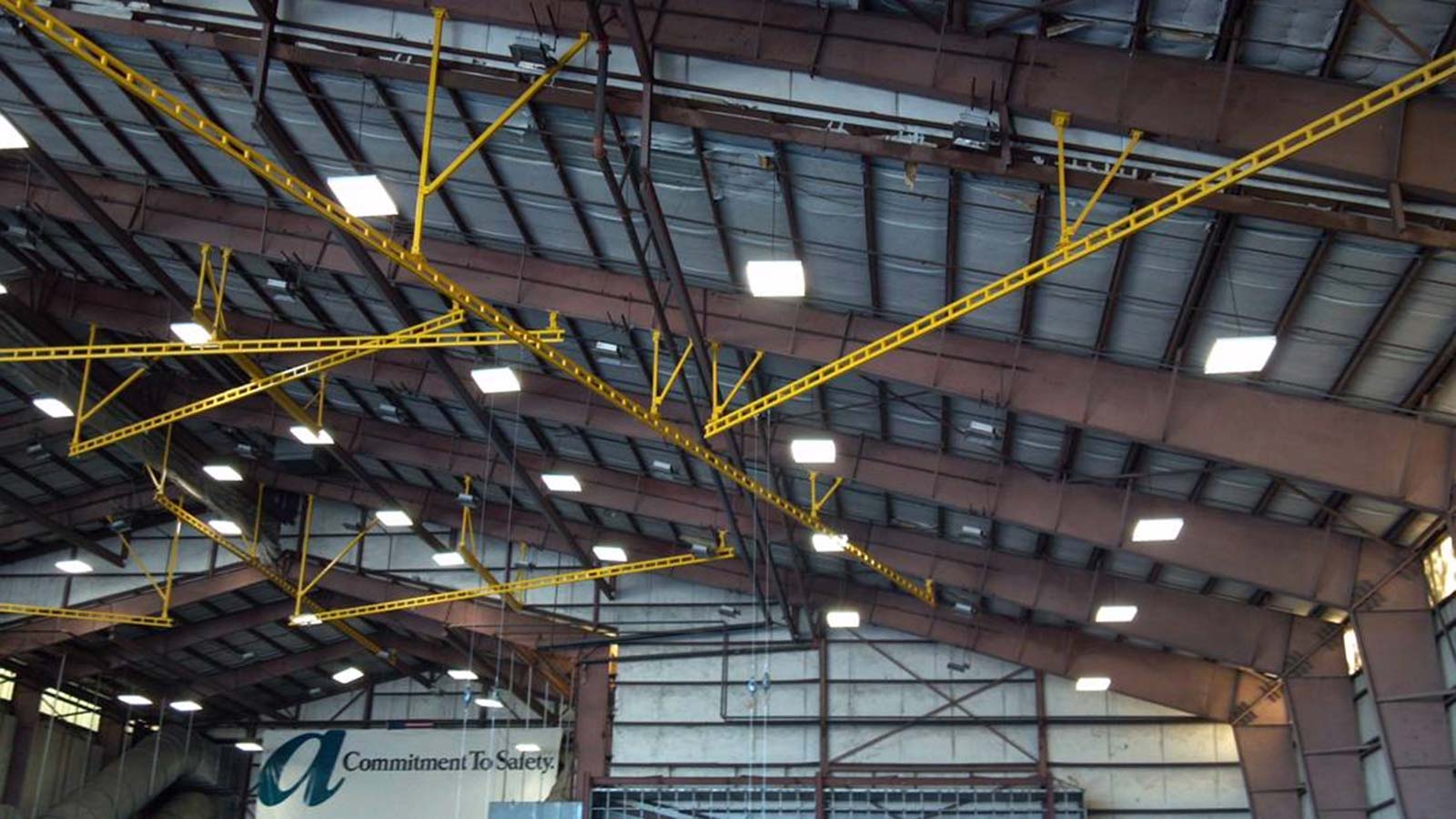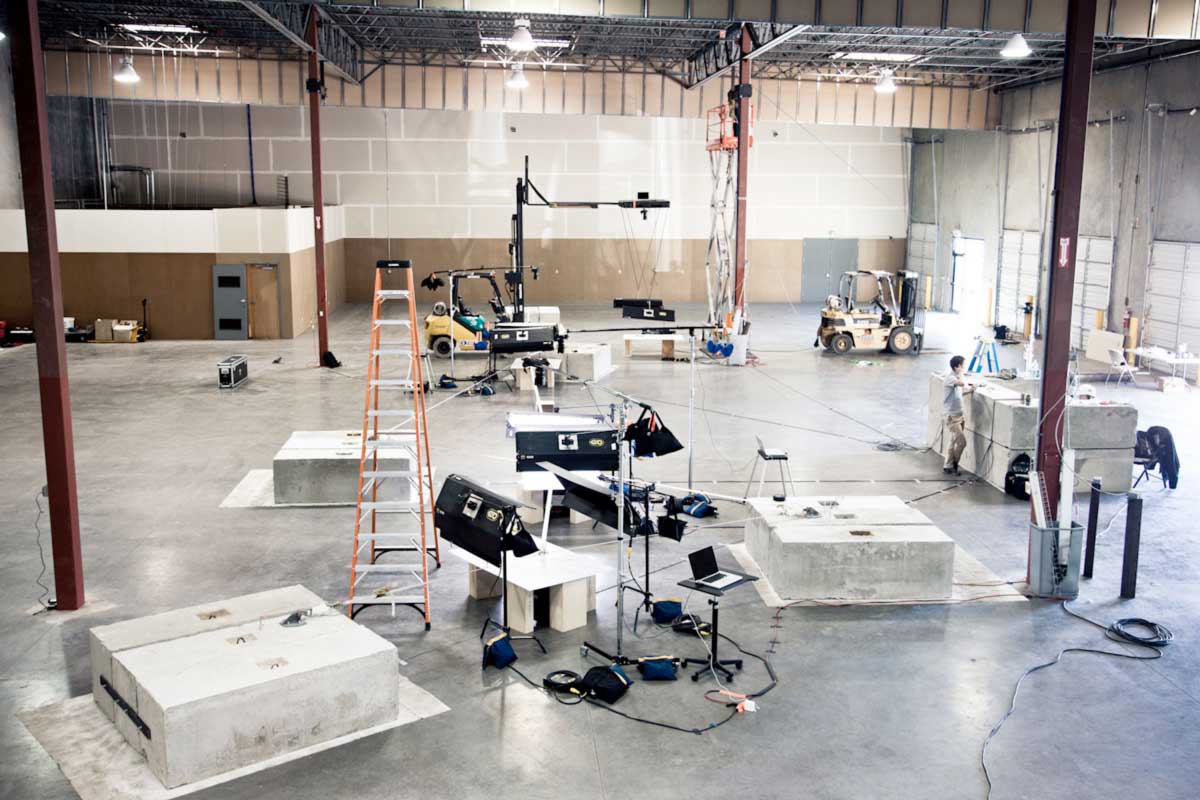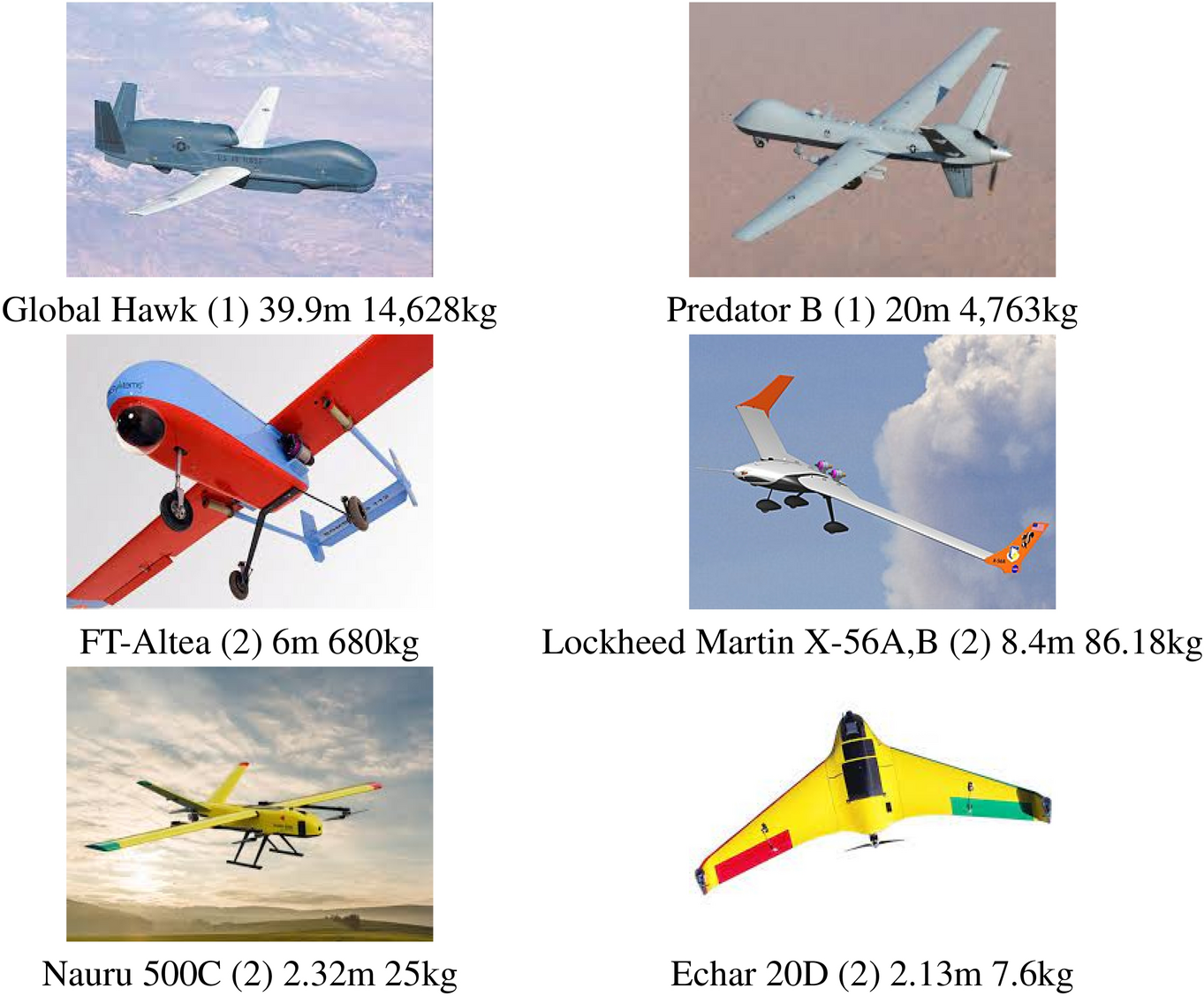Aircraft Fall Protection Systems - Brian set out to research fall protection equipment on the internet. He reviewed many manufacturers and suppliers. He considered the possibility of using a less expensive system like a flexible cable system, but ran into problems when he realized there would have to be a large number of cables installed to cover the entire hangar.
Having a cable system meant that if a worker was on a plane and had to complete a task just a few feet away, he would be burdened with unhooking, getting down, re-accessing the plane, and then re-attaching to the next cable
Aircraft Fall Protection Systems

. He needed something versatile—something that could accommodate his frequently changing aircraft and variety of aircraft with varying wing heights. One of the biggest challenges we face in designing fall protection solutions for corporate aircraft is that the aircraft are not very large and arresting a fall before the technician contacts the ground in a fall arrest situation can be difficult.
Corporate Aviation
FLS has developed systems and technologies that can arrest a fall in less than 2′, making the use of fall protection on a low wing aircraft such as a G5 or Falcon Jet must be more feasible.
Protecting those who serve and protect our country is something we are very proud of at FLS. Massive military aircraft like the C-5 and C-17 require a unique approach. In most cases these depot level maintenance facilities perform a wide range of work from painting, major repairs and maintenance.
Oftentimes this work requires many personnel to access the aircraft at one time. Solutions that include multiple rails, intersections and curved tracks offer a lot of benefits to these operations. Safeguard has designed and installed a range of fall protection systems to protect aviation techs and mechanics while performing inspection, maintenance, repair, and overhaul work at height for both fixed-wing and rotary commercial and private aircraft.
Systems that ensure worker safety, reduce maintenance time and technician fatigue. Our custom access and maintenance platforms provide unmatched passive fall protection for at height phase work. Inspected to American Welding Society standards and issued with a complete finite element analysis to confirm load ratings for light, medium and heavy duty.
Military Aviation
We are a complete turnkey provider of fall protection systems designed for aircraft hangars and have years of design and installation experience in this market sector. Contact us for expert assistance with your fall arrest, fall restraint and fall protection safety requirements.
In the absence of a specific requirement for Inspection, OSHA Sec 5.a.1 becomes default: OSHA Sec 5.a.1 (a) Each employer – (1) shall furnish to each of his employees employment and a place of employment which

are free from recognized hazards that are causing or are likely to cause death or serious physical harm to his employees; 29 USC 654 (2) shall comply with occupational safety and health standards promulgated under this Act.
(b) Each employee shall comply with occupational safety and health standards and all rules, regulations, and orders issued pursuant to this Act which are applicable to his own actions and conduct. Since the installation of the traveling bridge system in his hangar, Brian has had other hangar managers stop in to see the system and how it works.
Regular Inspections
He takes pride in the fact that he is protecting his workers with a system that provides the shortest fall distance on the market. Brian also increased his productivity. The traveling bridge system allows one of his work crews to maintain planes on one part of the hangar floor, while another crew can wash a plane in another area.
Both crews can utilize fall protection without waiting for the other to be done therefore maximizing their time. Brian summed up his thoughts on the system by saying “at the end of the day you completely forget that you're attached to a system.
It adds a level of safety in an environment that can be unsafe without a system like this.” FLS has long-term relationships with most of the major commercial airline companies. Most commercial aviation companies have long had fall protection.
They continue to grow and build new hangars, purchase new aircraft with different dimensions and evolve their maintenance schedules and aircraft positioning in the hangar. Our work with commercial airlines is most often to improve, modify or reconfigure their existing fall protection to accommodate these frequently changing environments.
Commercial Aviation
When current hangar manager Brian Stone arrived on the job, he recognized the fall hazards present in the hangar. When his workers were accessing the planes with maintenance lifts, they were not tied off to anchor points.
Once on the plane exterior, the workers were walking in areas that became slick when sprayed with cleaner solution. The wings and fuselage introduced curved surfaces, and areas like the stabilizer did not leave much room for the miscalculation of a step.

Not only did the situation require compliance with OSHA law, but the heights that his workers were operating at could cause death or serious injury if a fall occurred. Brian realized that the cost of a fall would be far more significant than an investment in the right fall arrest system.
Engineered to current ANSI and OSHA standards, the system installed was a custom traveling bridge system composed of four 150ft long enclosed track steel runways, each utilizing two aluminum bridges with 30ft spans. One runway was customized with three bridges to accommodate air filter cones hanging from the hangar ceiling.
Welcome To Diversified Fall Protection
The brackets used to attach to the existing hangar were custom engineered for the hangar. Now when workers get ready to work on a plane, the worker puts on a harness, pulls down the SRL hook and latches into his D-ring.
He is then immediately connected to a rigid aluminum bridge that travels back and forth on the runway as the employee walks. We're happy to have you here. When you work with DFP, you can expect the same level of high-quality systems, solutions and service you've come to expect from Fall Protection Systems.
On our website, you will find industry-leading fall protection systems and educational resources to help support you workplace safety. We look forward to partnering together on your next project. Solutions for commercial, corporate, aircraft manufacturers and military bases often have different needs based on the level of maintenance and repair performed.
Compliance with both OSHA 1910, AFOSH and ANSI Z359 is necessary to have a compliant fall protection solution. Whether they are Rigid Rail or Cable-based, our overhead trolley systems provide constant, unencumbered fall arrest protection for hangar work.
Welcome To Diversified Fall Protection
Rigid Rail Lifeline Systems tend to be the preferred solution due to their superior performance when the work deck is near the shop floor. We're happy to have you here. When you work with DFP, you can expect the same level of high-quality systems, solutions and service you've come to expect from Peak Fall Protection.
On our website, you will find industry-leading fall protection systems and educational resources to help support you workplace safety. We look forward to partnering together on your next project. Tritech Fall Protection Systems™ offers a range of OSHA and CSA compliant fall protection solutions, ranging from single point anchors to horizontal lifelines.

Systems are designed to enable the most efficient work procedures and give complete access to the aircraft's fuselage, wings and tail dock. Whether in the hangar or on the flight line, aviation technicians and mechanics often conduct their work well above the hangar floor and tarmac.
Environmental conditions, hydraulic fluid, sloped fuselages, and narrow stabilizers can increase the risk of a fall when working on aircraft. Adding to the complexity of providing fall protection for aircraft are factors such as aircraft positioning, work on a variety of different aircraft, unique building structures and the need for limited work interruption during installation and usage.
Overhead Fall Protection For Aviation Inspection Maintenance Repair
FLS' team of fall safety specialists and engineers take all of these factors and more into consideration when designing a fall protection solution. FLS offers a wide range of compliant solutions to provide fall protection for aircraft, both fixed wing and rotary.
Our turnkey approach, including site visits, design and engineering, fabrication, installation, testing, certification, and training are performed in accordance with our ISO 9001:2015 certified quality management program. This ensures that the work and products we provide are of the highest quality and we are continuously working to improve our processes and the systems we deliver to our customers.
The traveling bridge system also eliminates the possibility of a pendulum swing into the side of a plane because the bridge centers the fall protection overhead at all times. Swinging falls could not only injure or kill an employee, but could also damage the side of the plane within seconds.
Brian was impressed with the benefits of the Rigid Lifelines system and decided to make the investment. Following manufacturer's requirements is considered a reasonable effort to satisfy this general rule and employee responsibility. Flexible Lifeline Systems follows the requirements set by the manufacturer of the components that are used to build your system.
Aircraft Manufacturers
Additionally, ANSI Standards ANSI/ASSE Z359.2 Z.359.6-2016 9.2, while not codified as law, are considered to be "best practices" and often required by many companies – insurance, banking, etc., to provide coverage such as worker compensation or professional insurance, or to assess capital asset values.
These standards speak directly to the importance of regular inspection of fall protection systems. Eventually he reached out to a friend who was in the same line of work. He explained his challenge and his friend referred him to a Rigid Lifelines fall protection specialist and dealer.

The dealer came out on site, reviewed the application needs, and recommended traveling bridge systems. The design of the traveling bridge systems would allow for 100% fall arrest coverage in the hangar, so it wouldn't matter which planes were parked in the hangar, or how they were parked.
A bridge could be rolled overhead in any part of the hangar to provide fall arrest coverage. The rigidity of the system bridge in coordination with a Self Retracting Lanyard (SRL) would stop falls quicker than a cable system.
This meant that in the event a worker fell while on the plane, he would not fall far enough to be injured by impacting the plane. Many factors are taken into consideration when designing aircraft maintenance fall protection systems, including fall distance, number of users, aircraft locations, and future expansion.
Our trolley-based overhead rigid rail systems, single point anchors and work platforms are designed to meet regulatory OSHA/CSA compliance and assist operations in applying ANSI best practices. As an aircraft maintenance supervisor, there is enormous pressure to keep "your birds" in the air.
Losing vital staff due to falls makes it difficult to adhere to the rigorous maintenance schedules required to keep the fleet in service. Protecting your maintenance staff and creating a safe, accident free hangar requires a comprehensive fall protection program.
From an initial risk and hazard assessment, to a review of each hangar's structural elements, from installation of fall protection equipment to the onsite training of staff, DFP will partner with you to minimize falls and serious injury to your personnel.
Using the maintenance lift, the workers access the plane, but now when they step off the lift and maneuver on the aircraft surface, they are protected overhead by a traveling bridge. After hangar employees got their first chance to wash planes with the new system, they came away with nothing but positive things to say, including that it was easy to use, it did not interfere with their work tasks, and they felt safe with 360 degrees
of fall protection coverage. A major private northeastern airport is home to a corporate aircraft hangar for a large international company. The hangar houses a branch of the company's aircraft, including three jets and two helicopters.

These aircraft are flown on a weekly basis, depending on executive's travel needs. As the aircraft move in and out of the hangar, they are positioned as needed. Due to the demands of flying, the aircraft becomes dirty and requires weekly cleaning and maintenance.
In order to perform these tasks, hangar workers are required to access different sections of the aircraft. Using personal maintenance lifts, workers extend themselves to the height of the work area and step off onto the surface of the aircraft.
The height of the working surface varies by the make of the plane, but the wings, fuselage, and stabilizers easily exceed OSHA's law for working at height. Whether work behavior requires active fall arrest, work restraint, or passive/collective systems or a combination of systems to give your crew comprehensive coverage, our team of competent and qualified fall protection specialists and engineers have the experience to address your needs.
Fall protection for workers through the assembly process of an aircraft can be particularly challenging. In most cases, maintenance stands are used and provide a great method of access and fall protection for work around and under the aircraft but often do not protect the worker on top of the aircraft.
Overhead cranes are very common and also create another obstacle for conventional overhead fall protection. FLS works closely with aircraft manufacturers to design and develop custom solutions that integrate with the manufacturing and assembly process without a loss in production.
1910.140(12) Anchors used to attach to personal fall protection equipment must be independent of any anchorage used to suspend employees or platforms on which employees work. Anchorages used to attach to personal fall protection equipment on mobile work platforms on powered industrial trucks must be attached to an overhead member of the platform, at a point located above and near the center of the platform.
Often used in conjunction with rigid rail or cable-based fuselage and wing lifeline systems to provide a comprehensive solution, these single user tie off points are added to designs to provide overhead fall protection for the work conducted at the tail or nose section of commercial and
private fixed wing aircraft.
aircraft maintenance fall protection, wingrip fall protection, wingrip fall restraint system, different types of fall protection, hangar fall protection systems, fall protection rope requirements, crane used as fall protection, safety harness kit